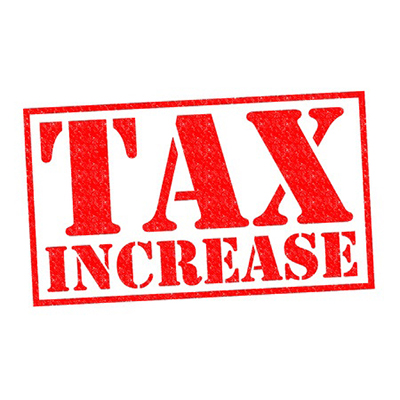The Tredyffrin Easttown School District School Board is contending with decreased local revenue, higher health insurance costs, increased contributions to the state pension fund, and diminished state and federal revenue. These problems do not make TESD unique; school boards across Pennsylvania are facing the same issues.
To suggest that Pennsylvania school districts are challenged by the financial crisis would be an understatement. As School Boards struggle to balance their budgets amidst these challenges, there is unprecedented concern as they look for solutions.
In TESD, the teacher contract talks continue as a backdrop to the ongoing budget discussions of the school board. With the current teachers’ contract set to expire on June 30, 2012; we are starting to see the battleground lines drawn in the sand. I am beginning to fear a “us versus them” mentality is developing. Many of the comments on the last Community Matters post were focused on the health insurance benefit plans of the teachers. I have to believe that the T/E teacher’s union TEEA accepts that the district can no longer afford to sustain their members’ health care plan at its current level – simply not possible.
Teacher unions fight for their members’ financial self-interests. To be clear, I do not have a problem with that motive – after all, isn’t that the primary reason ‘why’ a teacher would join TEEA and pay dues. Some may suggest that it appears that both TEEA and the school board are more focused on the money than the education. Let’s hope for the benefit of the District’s children, that conclusion reached by some is incorrect. Many of T/E teachers are also residents and parents. TEEA may be hoping to keep their benefit package intact but I have believe that the quality of the district’s educational program is every bit as important to most of its members.
Monday’s School Board meeting should be an indicator to the community on whether the teachers and the School Board are working toward the same goals or not. A couple of important topics for discussion at the meeting will be demotion and increased class size. I have previously written that increasing class size by one or two students may not be a problem, but could this be seen as the beginnings of change to the quality of TESD education? Increased class size may mean that teachers cannot focus as easily on individual students’ needs.
Just the talk of ‘possible’ demotion in TESD for economic reasons, is sending a negative tidal wave to TEEA. It is worrisome that the professional staff may be feeling devalued based solely on this budget strategy discussion. According to a recent TEEA press release, “T/E Teachers Willing to Help Create a Financial Bridge to the Future” the teachers union fully understands the District’s financial crisis and has prepared an ‘extremely reasonable solution’ to the School Board. However, according to TEEA, there has been unwillingness on the part of the School Board representatives to discuss their offer. The article further states that if demotion in the District moves forward, it is likely that some of the teachers will be forced to seek employment elsewhere. In reading the press release, I bought into this part of their argument.
However, the following paragraph from TEEA caused me pause,
At the same time, the Board has made assumptions about our future financial condition based upon many worst-case scenarios. They assume no future revenue growth, continued real estate decline, and continued lack of state and federal funding. These assumptions ignore significant increases the district made to its reserve fund in the past year. A more reasonable projection would account for an improving employment rate in Chester County, a real estate market that is beginning to rebound, and other indications of improving economic conditions.
To be fair to the School Board, they would not be doing their job if they were not realistic in their budget projections. Governor Corbett has focused his blame for the current budget crisis in Pennsylvania schools solely on the shoulders of local school boards. With Harrisburg’s major public education funding cuts, it is precisely the school board members who are now mired with this mess as the state pushes school funding responsibility on local school districts. I believe it is a bit quixotic for TEEA to suggest that the School Board should take a more positive (unrealistic?) approach to improving economic conditions. I am all for taking the ‘half glass full’ approach to situations but its needs to be tempered with realism. Rather than ‘worst-case scenario’ as suggested by TEEA, I hope that our School Board is attempting to be realistic in their projections.
In the latest TEEA press release, ‘Teachers Hope for Open Dialogue, Ask Community to Share Voice’, they offer a list of questions for community members to ask at Monday’s School Board meeting. Much of their focus is on the District’s fund balance, and the suggestion that the reserves be used to fund the budget shortfall. According to the TEEA, our school district currently has a reserve fund that is 26% of revenue, whereas other local school districts have fund balances of 8% to 10%. TEEA states that the PA School Boards Association recommends a balance no greater than 5%.
I believe that TESD has the largest fund balance in the state – someone please correct me if this wrong. And since the fund is taxpayer’s money, do you agree with TEEA and that a buy down from the reserve is in order to help fund the 2012-13 budget?
However, what are the repercussions, if any, with this approach for future budgets or future emergencies? Moving forward, you don’t know when a roof is going to need major roof repairs or a school boiler is going to need replacement. Few school districts have amassed anywhere close to the significant fund balance as TESD. Maybe we should view 2012 as an ‘emergency’ and with that approach, use the fund balance as TEEA suggests.

 A significant decision in the
A significant decision in the 